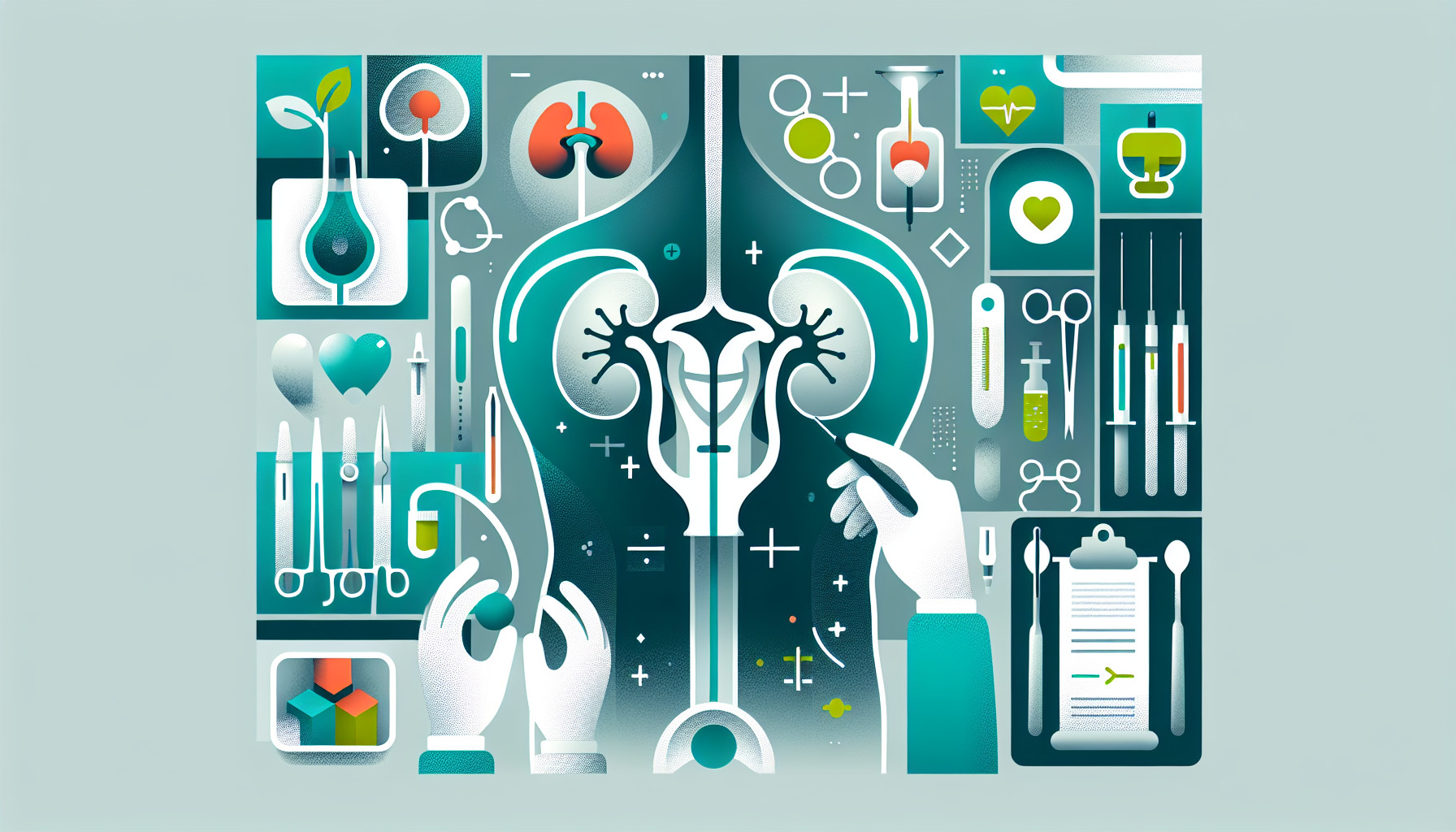Our Summary
This study looks at a surgical procedure called cutaneous ureterostomy (CU), which is a way of diverting urine flow out of the body after bladder removal surgery (radical cystectomy). This procedure has not been commonly used because it was believed to have high rates of complications and the need for a urine drainage tube.
The researchers reviewed medical records of patients who had this CU procedure after bladder removal at their hospital from June 2020 to December 2022. They specifically looked at whether these patients needed a drainage tube (stent) afterwards.
They found that out of 28 patients (average age 73, average weight within healthy range), 74% did not need a stent one year after surgery. Five patients did need a stent, but this was due to their bladder cancer being advanced rather than a complication from the CU procedure.
These findings suggest that the CU procedure could be a good option for patients having their bladder removed. However, more time and research are needed to confirm the long-term success of this procedure without the need for a stent.
FAQs
- What is a cutaneous ureterostomy (CU) procedure?
- Why was the cutaneous ureterostomy (CU) procedure not commonly used before?
- According to the study, what percentage of patients needed a stent after the CU procedure?
Doctor’s Tip
One tip a doctor might give a patient about ureterostomy is to follow up closely with their healthcare provider after surgery to monitor for any complications or the need for a stent. It’s important to communicate any changes in symptoms or concerns with your doctor to ensure the best possible outcome. Additionally, maintaining a healthy lifestyle, including staying hydrated and following any dietary recommendations, can help support the success of the ureterostomy procedure.
Suitable For
Patients who may be recommended for a ureterostomy procedure include those who have undergone bladder removal surgery (radical cystectomy) due to bladder cancer or other conditions that affect the bladder. It may be recommended for patients who are at high risk for complications with other types of urinary diversion procedures, such as ileal conduit or neobladder reconstruction. Additionally, patients who are unable to undergo more complex urinary diversion procedures due to medical conditions or other factors may also be recommended for a ureterostomy.
Timeline
Before the ureterostomy procedure:
- Patient is diagnosed with bladder cancer and undergoes radical cystectomy to remove the bladder
- Patient and healthcare team discuss options for urinary diversion, including cutaneous ureterostomy
- Patient consents to the CU procedure and is scheduled for surgery
After the ureterostomy procedure:
- Patient undergoes surgery to create the ureterostomy, diverting urine flow out of the body
- Patient may experience pain, discomfort, and temporary changes to urinary habits post-surgery
- Patient may require a drainage tube (stent) to help with urine flow in the immediate post-operative period
- Patient is followed up with regular check-ups to monitor healing and adjust care as needed
- Over time, patient may have the stent removed if urine flow is stable and no complications arise
Overall, the patient undergoes a series of pre-operative discussions and assessments before the ureterostomy procedure, followed by post-operative care and monitoring to ensure successful healing and adaptation to the new urinary diversion.
What to Ask Your Doctor
- What is a cutaneous ureterostomy (CU) and how does it work?
- What are the potential benefits of undergoing a CU procedure after bladder removal surgery?
- What are the potential risks and complications associated with a CU procedure?
- How likely is it that I will need a urine drainage tube (stent) after the CU procedure?
- What is the typical recovery process like after a CU procedure?
- Are there any lifestyle changes or restrictions I should be aware of after undergoing a CU procedure?
- How often will I need follow-up appointments to monitor my condition after the CU procedure?
- Are there any alternative treatments or procedures that I should consider before deciding on a CU procedure?
- What is the long-term success rate of the CU procedure in patients who do not need a stent?
- Are there any ongoing research studies or clinical trials investigating the effectiveness of CU procedures for bladder removal patients?
Reference
Authors: Thakker PU, Refugia JM, Casals R, Able C, Tsivian M. Journal: Int Urol Nephrol. 2023 Nov;55(11):2809-2814. doi: 10.1007/s11255-023-03721-y. Epub 2023 Aug 2. PMID: 37532909
